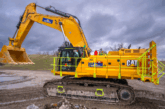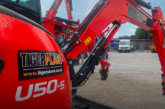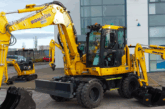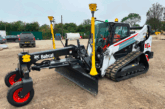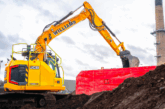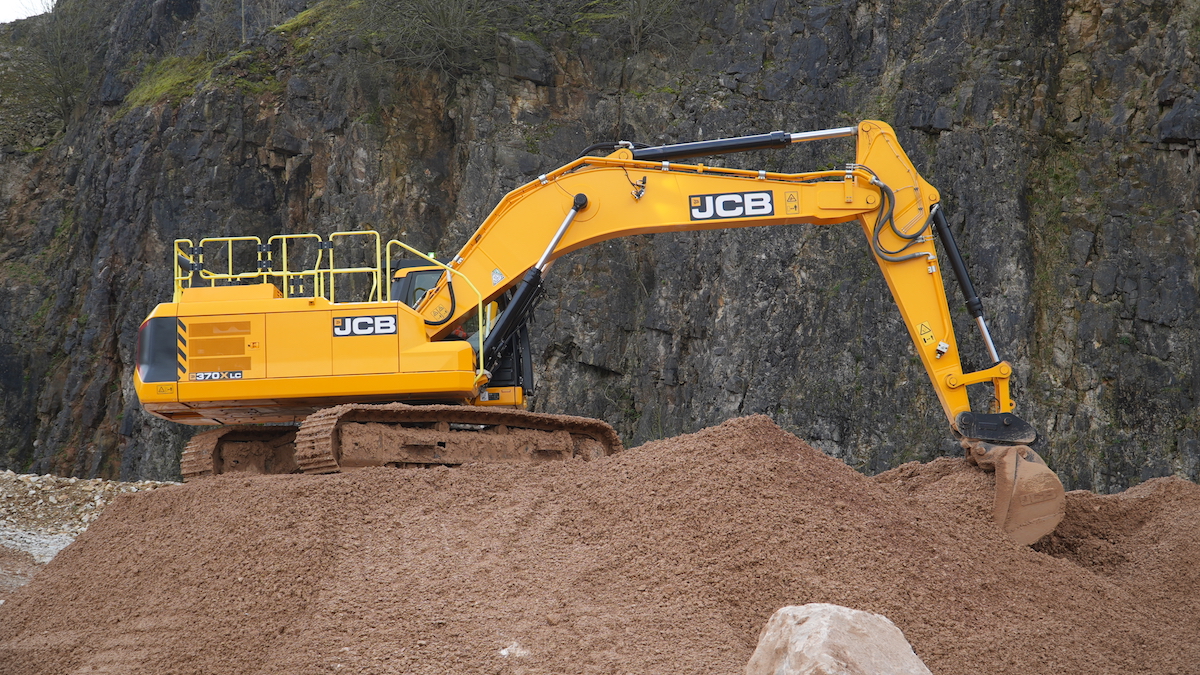
CPN’s newest team member is back. Some say he loves his off-set booms, others that he’s a fan of back actors. All we know is that we call him The Dig. This month he is going heavy metal.
The new and long awaited 370X replaces what was previously the largest model in JCB’s range of hydraulic excavators, the JS370LC, and is the biggest and most powerful X-Series model to date, competing in the 35-40 tonne sector.
With over 4-years in the making, the new model builds on the DNA and proven success of the original X-Series models that were first launched back in 2018 with the roll out of the 220X, and subsequent models including, 131X, 140X, 150X and 245XR
I’m guided up to the engine bay by all-around guardrails and grab handles, and anti-slip tread plates kept me sure footed on my way up. In a move away from previous engine makes fitted, the 370X is powered by the latest EU Stage V and EPA Tier 4 Final emissions compliant Cummins L9 diesel engine, a well proven power pack in the heavy equipment sector.
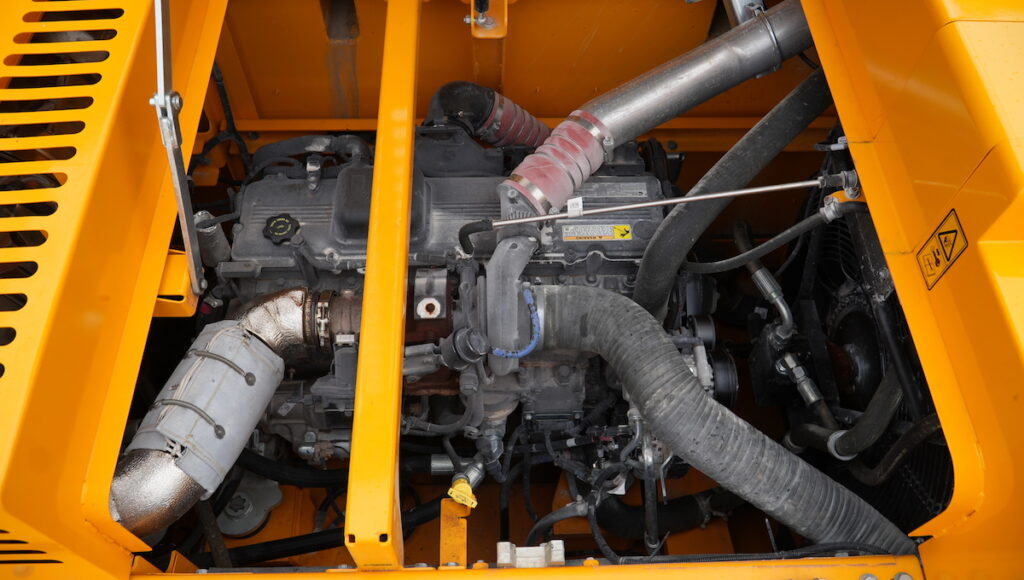 The 8.9-litre, six-cylinder, engine is said to boast a 14% power increase over the outgoing JS370, with 240kW (322hp) available at just 1,700rpm. The engine delivers this maximum power within a reduced operating rev range, to increase fuel economy and reduce overall noise levels.
The 8.9-litre, six-cylinder, engine is said to boast a 14% power increase over the outgoing JS370, with 240kW (322hp) available at just 1,700rpm. The engine delivers this maximum power within a reduced operating rev range, to increase fuel economy and reduce overall noise levels.
Service intervals have also been extended, hydraulic oil intervals are now doubled to 2,000 hours, with engine coolant service now required at 3,000 hours, while having to change the air filter has now been extended to 2,000 hours, although I’m sure the purists amongst us would still like to give it a blow-out periodically especially on dusty job sites.
As with the previous X-Series models, under the skin the machine is brimming with top-quality blue-chip Japanese components, including the very latest generation Kawasaki tandem hydraulic pump and Kayaba (KYB) valve block. Hydraulic pump pressure has been increased to 350 bar, but this rises to an impressive 380 bar when deploying the power boost function.
Increased diameter hydraulic service pipework, and the raised hydraulic pressures ultimately result in more power at the business end of the machine, combining to make a more powerful and smooth digging experience.
A number of field-follow machines have, in the words of JCB, been ‘tested to extreme’ racking up thousands of hours in the process, not just here in the UK but one 370XNLC example that was being demoed in the quarry, with the new JCB HM330T hydraulic breaker on, designed specifically for the 370X, had previously been working in a quarrying application in Croatia breaking up hard heavy rock. The team using that machine there, was so impressed that it has asked for its return to the quarry after the launch event.
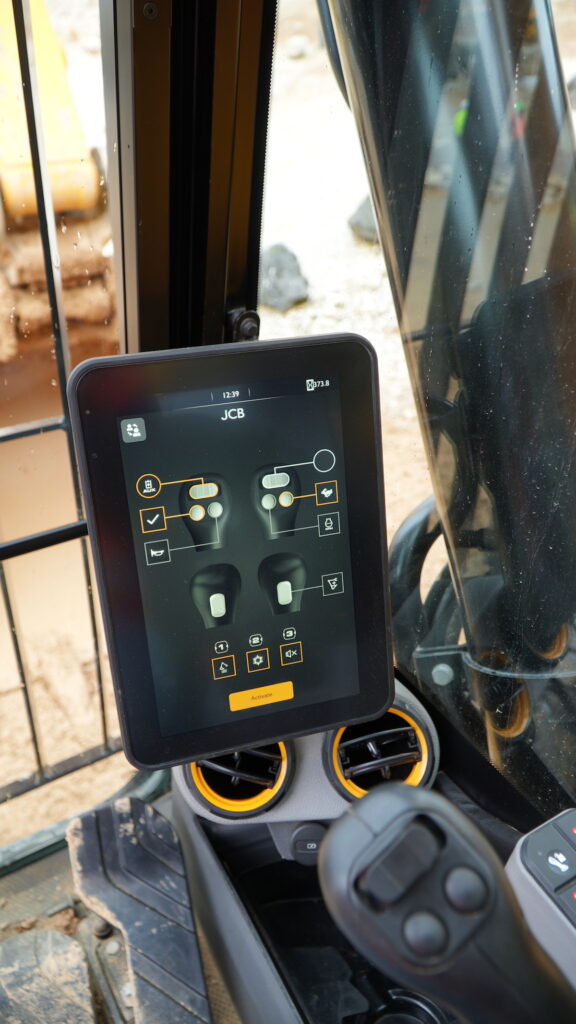
A redesigned 6.45m monoboom with cast boom foot is fitted as standard, and end users can specify either 2.63m, 3.23m or 4.03m dipper sticks, to suit the application the machine is working on. The heavy-duty options are fitted with crush bars to protect the lower front of the dipper arm from any potential damage from rock or demolition debris.
Bucket pins have been ‘beefed up’ with an increase in diameter size, while a new JCB dual pin quick-hitch can be specified to enable pick up of 90mm or 100mm pinned attachments.
Walking around the new machine, it’s all very similar to the rest of the X-Series range, double-skinned steel panel doors are fitted, offering strength and durability, on the offside a single panel reveals access to the hydraulic pump.
On the nearside twin panel doors are provided, immediately behind the cab, we discover the large air filter housing, cavernous storage space, and there was even a convenient storage area for a track spade. The rear panel reveals the cooling packs, coincidentally, on the other side of the radiator a hydraulically-operated cooling fan with reversing function is fitted. This bay is also home to a very small windscreen washer bottle.
Climbing up into the seat, I was instantly reminded just how good the JCB Command Plus ROPS cab is, without a doubt one of the most spacious and luxurious places to spend a shift. According to JCB the cabin has 2.86m3 of volume inside and in cab noise levels of just 69dB.
The Command Plus cab has now also been further improved with the introduction of a brand new 10in touchscreen monitor which features a new user interface called JCB UX.
The tablet style monitor looks top drawer, and is easy to navigate around. It appears that the focus has been on making it more user friendly with customisable hot keys, to allow operators to personalize settings to suit individual preferences.
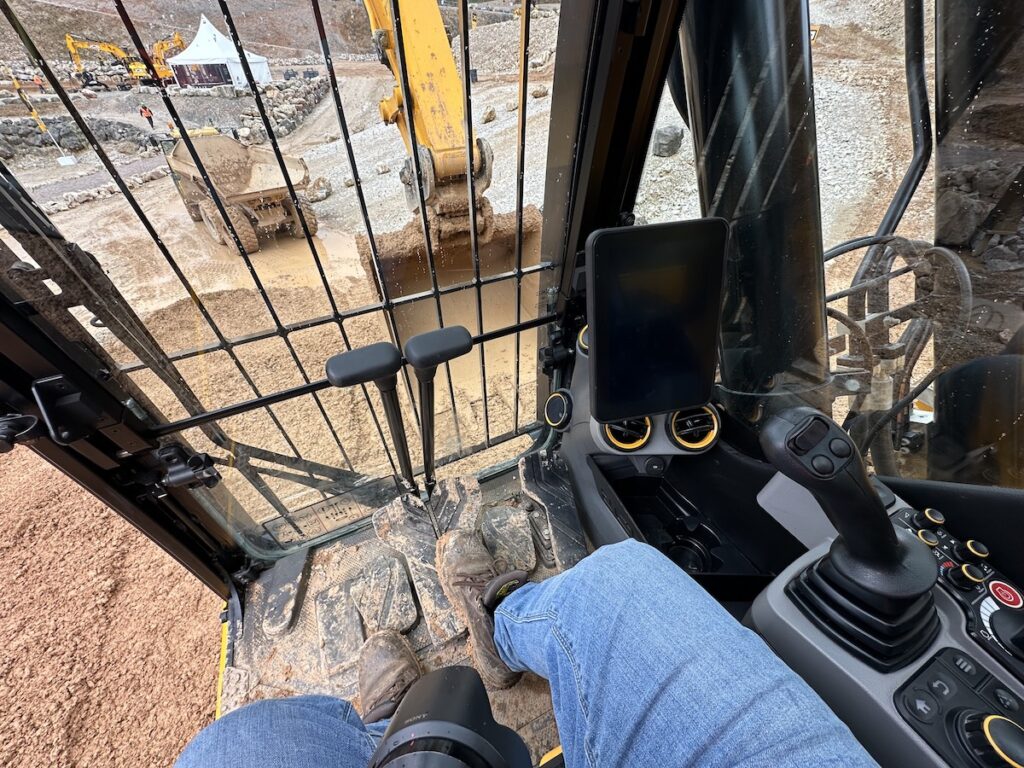 The JCB UX interface has up to 25 user profiles available, so different operators can have the machine set up how they like it, at the click of a button; this includes setting up different joystick configurations if they prefer an alternative layout.
The JCB UX interface has up to 25 user profiles available, so different operators can have the machine set up how they like it, at the click of a button; this includes setting up different joystick configurations if they prefer an alternative layout.
Another nice touch is the adoption of ‘how to’ videos which are available to watch on screen in superb quality, and explain all the benefits and features of the JCB UX system, a superb touch for individuals who struggle with an operator’s manual for instance.
Naturally the display offers all the usual machine status feedback, including fluid levels, and temperatures, climate control settings, and doubles up as the rear and side view camera screen. Naturally most of us have a mobile phone with us at all times these days, and the new JCB UX features mobile phone connectivity with phonebook integration via the monitor.
Now to get some action. Punching in the code on the monitor, a quick press on the start button and the big Cummins lump came to life, not that you would notice I must say, as it was extremely quiet in the cab, even observing the machine in operation earlier from ground level, I was impressed by its quietness.
I settled into the luxurious heated air suspension seat, and got myself reacquainted with the layout of the X-Series cab controls. Everything in these cabs is just where you would want it to be, extremely well laid out, and you just know that operator feedback has been taken on board during the design process.
Cranking up the throttle dial and with a sharp tug on the right-hand joystick, I started to throw some stone around on the heap, the stone was loose, but extremely wet, which made it a lot heavier, but it was no challenge for the 370X which I found to be very quick for its size. I threw a full bucket out over the side to see if it would unsettle her, but it remained planted, thanks in part to a new heavier counterweight, and heavy-duty undercarriage which has been designed for this new model.
The machine features three work modes. I’ve never been a fan of the eco or standard work mode settings on any machine, to my mind (possibly old school thinking) they just don’t function as well in that mode, so I opted for the power mode, which I found to be lot more responsive, in addition to being more powerful.
I spent my last 20 minutes on the machine shaping up the heap, and sealing it from the weather, I was so impressed with the smoothness while grading and the overall performance of this big machine, which is clearly carrying on the legacy of the original X-Series machines and taking it to new heights.
This machine ticked all the boxes and left a lasting impression on me personally. Its already gaining many fans out in the field with a significant number of big-name blue-chip companies ordering and taking delivery of 370X models, a testament to the big excavator’s quality, strength and durability.

